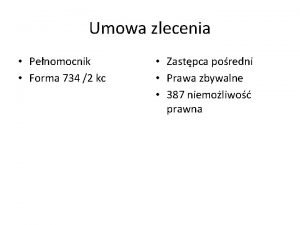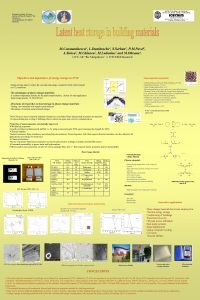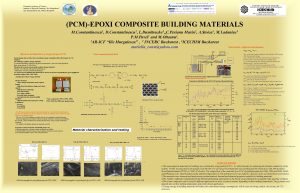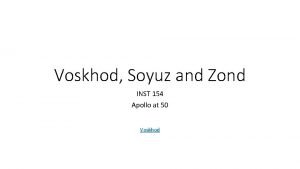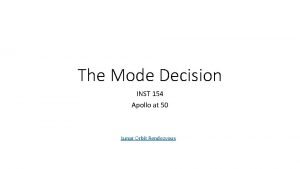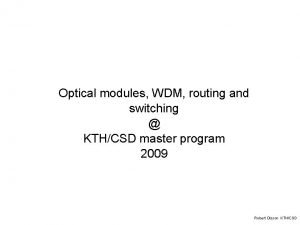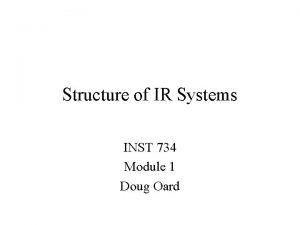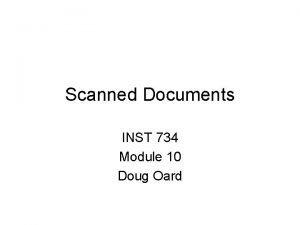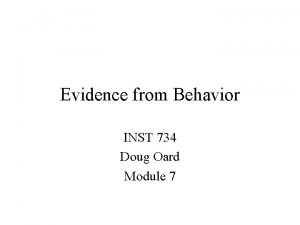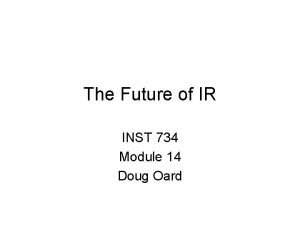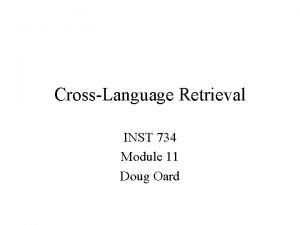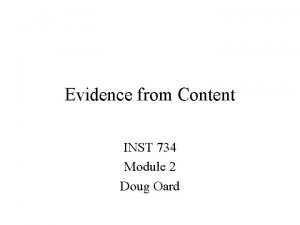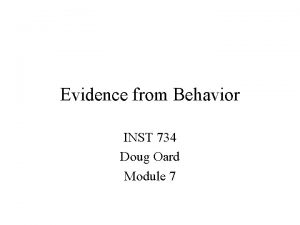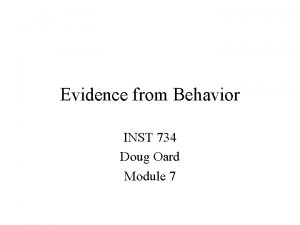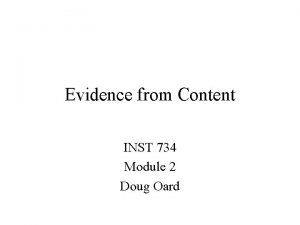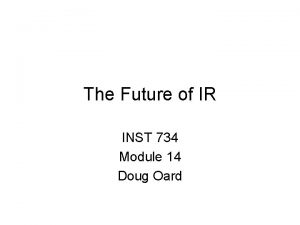Structure of IR Systems INST 734 Module 1











- Slides: 11

Structure of IR Systems INST 734 Module 1 Doug Oard

Segments 1. The nature of Information Retrieval (IR) 2. What IR systems do 3. The structure of interactive IR systems

Q 1 Visceral Need Q 2 Conscious Need Q 3 Formalized Need Q 4 Compromised Need (Query) Intermediated Search End-user Search Taylor’s Model of Question Formation

Iterative Search • Searchers often don’t clearly understand – The problem they are trying to solve – What information is needed to solve the problem – How to ask for that information • The query results from a clarification process Need • Dervin’s “sense making”: Gap Bridge

Design Strategies • Foster human-machine synergy – Exploit complementary strengths – Accommodate shared weaknesses • Divide-and-conquer – Divide task into stages with well-defined interfaces – Continue dividing until problems are easily solved • Co-design related components – Iterative process of joint optimization

Human-Machine Synergy • Machines are good at: – Doing simple things accurately and quickly – Scaling to larger collections in sublinear time • People are better at: – Accurately recognizing what they are looking for – Evaluating intangibles such as “quality” • Both are pretty bad at: – Mapping consistently between words and concepts

Divide and Conquer • Strategy: use encapsulation to limit complexity • Approach: – Define interfaces (input and output) for each component – Define the functions performed by each component – Build each component (in isolation) – See how well each component works • Then redefine interfaces to exploit strengths / cover weakness – See how well it all works together • Then refine the design to account for unanticipated interactions • Result: a hierarchical decomposition

Supporting the Search Process Source Selection IR System Query Formulation Predict Nominate Choose Query Search Query Reformulation and Relevance Feedback Ranked List Selection Document Examination Source Reselection Document Delivery

Supporting the Search Process Source Selection IR System Query Formulation Query Search Ranked List Selection Indexing Document Index Examination Acquisition Document Collection Delivery

Process/System Co-Design

Looking Ahead • Modules 2: Indexing • Module 3: Ranking • Module 4: Interaction • Module 5: Evaluation

